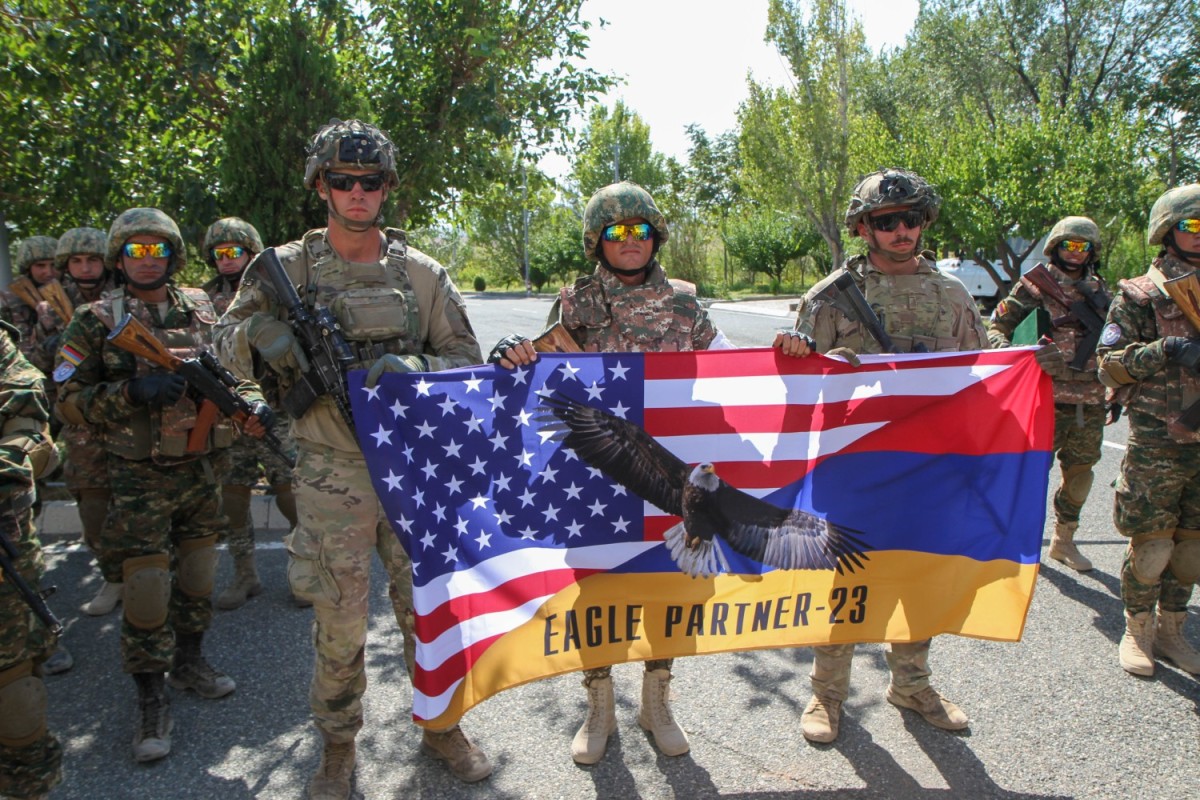Inside Kansas Joint Training: How Armenian Sergeants Sharpen Tactical Leadership Skills

Armenian Sergeants Enhance Tactical Skills in Kansas Joint Training Exercise
Last month, a group of nineteen sergeants from the Armenian military participated in a prominent annual training exercise hosted in Kansas, engaging with their counterparts from the state’s National Guard. This 9th iteration of the exercise focused on refining leadership and tactical capabilities essential for modern military operations.
Spanning from mid to late July, the participating non-commissioned officers engaged intensively in exercises designed to hone their operational expertise and integrate advanced methodologies observed in the U.S. military. The program was crafted not only to elevate individual skills but also to foster closer cooperation between the armed forces of both nations.
This regular engagement serves as a platform for exchanging tactical knowledge and leadership techniques, strengthening professional development within the non-commissioned officer ranks. Such partnerships are central to enhancing the interoperability that modern joint operations often demand.
Strengthening Leadership and Tactical Capabilities
The training framework was structured around a spectrum of real-world scenarios, requiring participants to navigate complex environments and rapidly evolving challenges. These drills encompassed tactical decision-making, command and control procedures, and squad-level leadership challenges, with sergeants taking charge of their units under controlled pressure conditions.
By adopting operational standards and best practices from the U.S. military, the visiting officers were able to benchmark their skills against internationally recognized criteria. This opportunity to absorb new techniques, from troop leading procedures to tactical communication, is invaluable for advancing their competencies and enhancing unit effectiveness back home.
The emphasis on practical, hands-on scenarios ensured that participants integrated theoretical knowledge with field application — a vital link for translating skills into effective combat readiness. Moreover, exposure to these methodologies promotes a shared understanding of tactics, which is crucial for any coalition or multinational operation.
Fostering Bilateral Military Cooperation
This annual event is one instance in a broader continuum of military exchanges aimed at deepening strategic ties. As these sergeants develop their proficiency, they simultaneously strengthen the professional and interpersonal links between the two forces. Such collaborations contribute substantively to collective security frameworks and signify a commitment to mutual support and alliance development.
Operational interoperability is a cornerstone of joint mission success, and alignment in training standards facilitates smoother coordination during multinational deployments. Beyond tactical benefits, these exchanges also cultivate mutual respect and understanding, which are essential for long-term partnership resilience.
Notably, this systemized approach to professional military education helps cultivate a cadre of leaders proficient in joint and combined operations. These leaders carry back not only enhanced individual skills but also the ability to disseminate knowledge throughout their respective forces, amplifying the training impact over time.
Implications for Regional and International Defense Relations
Experiences drawn from such exercises echo positively in broader defense cooperation contexts. They signal an ongoing investment in maintaining robust, adaptive security partnerships capable of addressing contemporary challenges. In particular, nurturing a well-trained non-commissioned officer corps contributes decisively to unit cohesion, discipline, and operational effectiveness, which are crucial in any defense alliance.
Moreover, consistent joint training initiatives serve as a foundation for coordinated peacekeeping and tactical operations, expanding the scope for future collaborative missions. Building these practical linkages and professional networks enhances not only immediate military readiness but also lays groundwork for diplomatic engagement through defense channels.
By integrating lessons learned and sharing capabilities, both parties reinforce their commitment to collective security goals and demonstrate the tangible benefits of sustained military cooperation.
